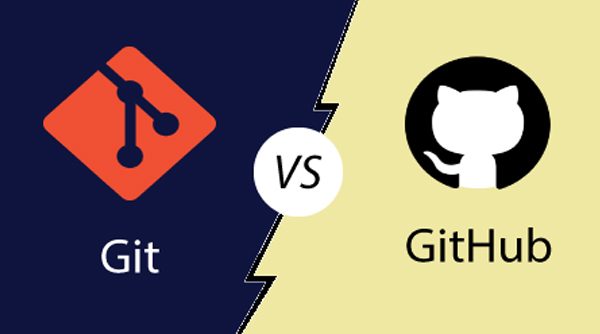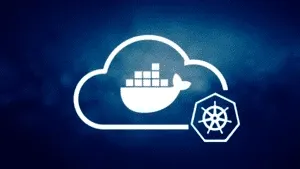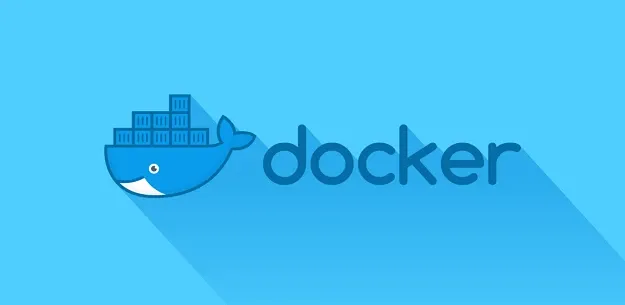This plan includes
- Limited free courses access
- Play & Pause Course Videos
- Video Recorded Lectures
- Learn on Mobile/PC/Tablet
- Quizzes and Real Projects
- Lifetime Course Certificate
- Email & Chat Support
What you'll learn?
- Learn the key concepts of the Git source control system
- Compare the different states in Git
- Create and manage repositories on GitHub
- Save work in progress with Stashes
- Even a bit of time travel within Git repositories and on GitHub
- Join other GitHub projects by Forking and contribute back using Pull Requests
- Group related repositories together with GitHub Organizations
- Step through the entire Git workflow
- Manage files inside and outside the control of Git and GitHub
- Create branches and resolve conflicts with confidence
- Mark special events with Tags and Releases
- Perform many of the same local Git operations directly on GitHub
- Review and Accept Pull Requests from Others
- Manage project defects or enhancement requests with GitHub Issues
Course Overview
This course will comprehensively cover the GitHub hosting service as a companion to the Git source control tool, which means no prior knowledge or experience is required. Students will emerge at the end with a very solid understanding and hands-on experience with Git and GitHub.
Course Organization
The course is divided into four major components:
-
Introduction and Setup
-
Learning Git Source Control
-
All About GitHub
Each one of the above components spans multiple sections in this course.
Introduction
The Introduction provides a welcome to the course including some useful tips for getting the most out of taking the course and how the course is designed. That is followed by the Core Concepts which go over some critical theory before diving straight into Git.
After the introduction and core concepts, the first thing we do is a Quick Installation for both Windows and Mac.
Learning Git Source Control
In The Basics, we walk through all the foundational commands needed to start a new project managed by Git (or enable Git for an existing project) all the way through making commits, including common file operations like moving and deleting files. We also cover how to exclude the wrong files from accidentally being committed and how to review your repository's history.
With a strong foundation in place, we explore some more Advanced Git topics like comparing differences, branching and merge resolution, tagging special events, saving work in progress, and even a bit of time travel.
All About GitHub
The main part of this course is all about GitHub. We will explore GitHub in-depth from a source control hosting repository perspective.
In Welcome to GitHub, we start off exploring some of the basic features of GitHub by creating a fresh repository and associating our local repository with it. Then, we prepare for the remainder of the course by setting up SSH Authentication, which we will use from this point forward. After that, we continue looking at the GitHub Repository, including many of the same operations we performed locally but done directly within GitHub. Then in GitHub Repository Branches, we dive into how Branches on GitHub and our local system work with each other.
After we have comprehensively covered how GitHub repositories work, we focus on how GitHub Tags and Releases work and their relationship with local tags in Git. We can then use tags/releases while Comparing Differences on GitHub.
We start tying things together in Social Coding where we join other projects on GitHub by forking and then submitting our contributions back using pull requests.
Once part of a team, you might use GitHub Issues to track defects or enhancement requests.
Sometimes you just need to share small parts of a file or a set of files but don't want to bother with a full Git repository. That is where GitHub Gists help out -- share just a snip of code or entire files.
Finally, group related GitHub repositories with GitHub Organizations and manage permissions and access using teams.
Course Features
All tools have installation and configuration sections to ensure no one is left behind.
Presentations provide audio/video training of conceptual ideas. Since few like slide-ware presentations, slide presentations are kept to a minimum.
Screencasts provide a video of the instructor's computer system with any actions, commands, or screens displayed and narrated. There are nearly 2 hours of screencast based video training in order to step through each command or action in sufficient detail.
All videos are available in high-quality 1080p / Full HD resolution for sharp and clear viewing on modern desktops and tablets.
Several attachments and document lectures throughout the course provide supplemental information, illustrations, or other reference material.
Moving Forward
This course will expand periodically to include more topics, supporting materials, and first-class content! Some content may be in direct response to student feedback or discussions -- so get engaged with the course discussions feature!
Pre-requisites
- Basic computer skills
- Ability to install software on your computer
Target Audience
- Anyone interested in using source control and specifically Git and GitHub
- Software engineers, developers, programmers new to Git or GitHub
- IT Managers or technical leads considering Git or GitHub for version control on their team
- Freelancers or other creative professionals
Curriculum 17 Lectures 01:46:03
Section 1 : Git and GitHub Masterclass
- Lecture 2 :
- What is GitHub?
- Lecture 3 :
- Why to use GitHub?
- Lecture 4 :
- Downgliding Git
- Lecture 5 :
- Navigation using terminal & intro to Git status
- Lecture 6 :
- Learn how to make your first commit
- Lecture 7 :
- Commit modifications, Unstage changes and trace history
- Lecture 8 :
- All about git reset and git stash
- Lecture 9 :
- Connect local folder to GitHub & an intro to git push
- Lecture 10 :
- Learn Git Branching
- Lecture 11 :
- Pushing Modifications
- Lecture 12 :
- What is forking and cloning
- Lecture 13 :
- Intro to Pull Requests
- Lecture 14 :
- Delete commit in Pull Request
- Lecture 15 :
- Making our GitHub repo's Main branch even with Upstream's Main branch
- Lecture 16 :
- Using git rebase to merge different set of commits
- Lecture 17 :
- Understanding how to resolve merge conflicts
Our learners work at
Frequently Asked Questions
How do i access the course after purchase?
It's simple. When you sign up, you'll immediately have unlimited viewing of thousands of expert courses, paths to guide your learning, tools to measure your skills and hands-on resources like exercise files. There’s no limit on what you can learn and you can cancel at any time.Are these video based online self-learning courses?
Yes. All of the courses comes with online video based lectures created by certified instructors. Instructors have crafted these courses with a blend of high quality interactive videos, lectures, quizzes & real world projects to give you an indepth knowledge about the topic.Can i play & pause the course as per my convenience?
Yes absolutely & thats one of the advantage of self-paced courses. You can anytime pause or resume the course & come back & forth from one lecture to another lecture, play the videos mulitple times & so on.How do i contact the instructor for any doubts or questions?
Most of these courses have general questions & answers already covered within the course lectures. However, if you need any further help from the instructor, you can use the inbuilt Chat with Instructor option to send a message to an instructor & they will reply you within 24 hours. You can ask as many questions as you want.Do i need a pc to access the course or can i do it on mobile & tablet as well?
Brilliant question? Isn't it? You can access the courses on any device like PC, Mobile, Tablet & even on a smart tv. For mobile & a tablet you can download the Learnfly android or an iOS app. If mobile app is not available in your country, you can access the course directly by visting our website, its fully mobile friendly.Do i get any certificate for the courses?
Yes. Once you complete any course on our platform along with provided assessments by the instructor, you will be eligble to get certificate of course completion.
For how long can i access my course on the platform?
You require an active subscription to access courses on our platform. If your subscription is active, you can access any course on our platform with no restrictions.Is there any free trial?
Currently, we do not offer any free trial.Can i cancel anytime?
Yes, you can cancel your subscription at any time. Your subscription will auto-renew until you cancel, but why would you want to?
Instructor

829 Course Views
1 Courses



 Tech & IT
Tech & IT
 Business
Business
 Coding & Developer
Coding & Developer
 Finance & Accounting
Finance & Accounting
 Academics
Academics
 Office Applications
Office Applications
 Art & Design
Art & Design
 Marketing
Marketing
 Health & Wellness
Health & Wellness
 Sounds & Music
Sounds & Music
 Lifestyle
Lifestyle
 Photography
Photography
















